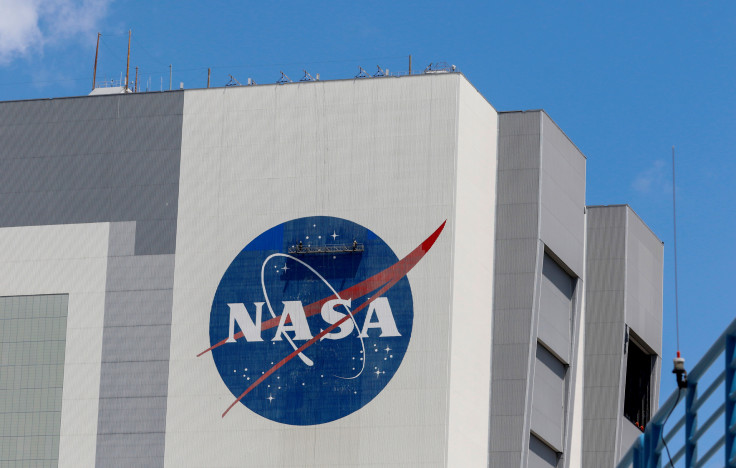New supersonic NASA passenger jet could cut travelling time from New York to London down to 90 minutes
The new supersonic NASA passenger jet is being developed to travel more than twice the speed of a F/A-18 fighter jet – which has a potential blistering speed of 3,300 mph (Mach 4).

NASA could make transatlantic routes much more convenient for travellers.
The United States government agency, responsible for science and technology related to air and space, is currently developing a supersonic passenger jet that could possibly allow journeys from New York to London to take just an hour and a half. This would drastically decrease travel time, cutting off a little over seven hours from a standard flight from the Big Apple to the English capital.
NASA has looked into possible supersonic travel speeds between 1,535 mph and 3,045 mph at sea level (Mach 2 – Mach 4), which is considerably more than the 600 mph (-Mach 1) speed of current large airliners.
The new supersonic NASA passenger jet is tipped to travel up to a potential blistering speed of 3,300 mph (Mach 4), more than double the speed of a F/A-18 fighter jet, which has a record speed of 1190 mph (Mach 1.8). The Concorde's fastest flight journey from New York to London occurred in February 1996, when the jet travelled at 1354 mph (Mach 2.04) and made the transatlantic trip in two hours and 53 minutes.
With Concorde having been out of the picture for 20 years, due to issues it had with noise, costs, lack of flight availability and the devastatingly fatal crash from Paris to New York in 2000, there has not been as great a super speed jet for transatlantic routes. This is because the quickest regular jet takes roughly five hours to take the 3,461-mile journey from New York to London and NASA believes it can change that with its new supersonic jet.
In an official statement, NASA explained that it wants to speed up the travelling time from New York to London four times quicker than it currently is. The process for the new supersonic NASA passenger jet will primarily focus on eliminating sonic booms when taking off or landing but not mid-flight impact as that will be focused on at a later stage.
Supersonic flights travelling over-land have been banned in many countries including NASA's homeland, the United States. Why? Reports revealed sonic booms cause noise pollution and affect the physical and mental state of people in close proximity. NASA now have to come up with technological and structural solutions for its new jet to prevent sonic booms and ensure safe travel.
The formation of NASA's new supersonic jet to get from New York to London will be based on the agency's X-59 supersonic aircraft, which recently had its test aircraft completed as it looks to eliminate sonic booms and function quietly. The X-59 is set to be able to fly transatlantic routes in just under four hours and the designs of the jet will allow it to travel at a speed of 925 mph (Mach 1.4).
NASA has awarded year-long working contracts to two teams to help assist with work on the new passenger jet and advance its high-speed air travel research, with the agency's Advanced Air Vehicles Program (AAVP) overseeing the contracts.
The manager of NASA's Hypersonic Technology Project, Mary Jo Long-Davis, highlighted the significance of the contracted work. She stated: "The design concepts and technology roadmaps are really important to have in our hands when the companies are finished."
Long-Davis also added: "We are also collectively conscious of the need to account for safety, efficiency, economic and societal considerations. It's important to innovate responsibly so we return benefits to travellers and do no harm to the environment."
One of the teams will be led by aerospace company, Boeing, who will command other contributors including Rolls-Royce North American Technologies, GE Aerospace, Exosonic and Georgia Tech Aerospace Systems Design Laboratory.
The other contracted team will see Northrop Grumman Aeronautics Systems take charge of Boom Supersonic, Blue Ridge Research and Consulting, plus Rolls-Royce North American Technologies, who will contribute to both teams.
The work on the contracts will consist of producing technology roadmaps regarding options for hypersonic air travel, potential obstacles and navigating the tools that will be needed to help go beyond Mach 2 speeds. The roadmaps will also carry out work on non-propriety designs to help visualise hard-flying vehicles.
The concepts that both teams will work on designing for the new supersonic NASA passenger jet include the airframe, power system, propulsion methods, thermal management and composite materials that would be able to cope with rapid supersonic travelling speeds.
The project Manager for NASA's Commercial Supersonic Technology Project, Lori Ozoroski, mentioned how previous projects have been helpful in the past and will hopefully reoccur this time with the new research.
She explained: "We conducted similar concept studies over a decade ago at Mach 1.6-1.8, and those resulting roadmaps helped guide NASA research efforts since, including those leading to the X-59. These new studies will both refresh those looks at technology roadmaps and identify additional research needs for a broader high-speed range."
Elsewhere, Schiphol Airport in Amsterdam has plans in place to become the very first airport to ban private jets due to the negative impact it causes to the environment and the disturbance it causes to local people near the airport.
© Copyright IBTimes 2024. All rights reserved.






